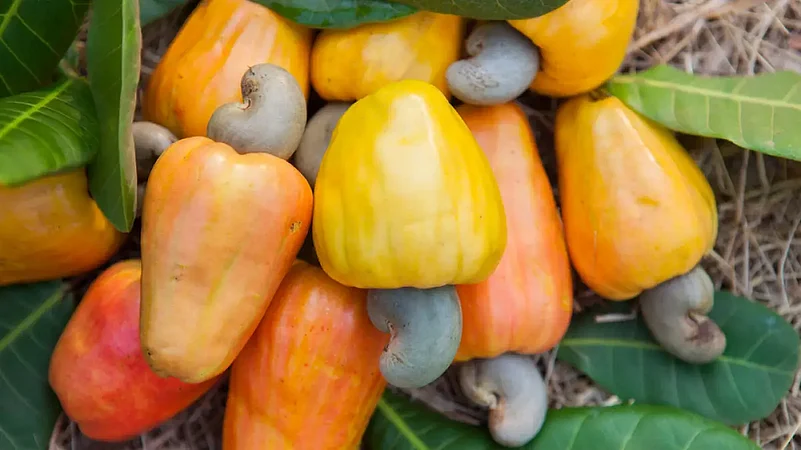Caution—the following sentence may be injurious to your health.
The test of a good cashew feni is to dip your finger in it and light it. If you succeed, it’s all good. If I’d followed this to the letter over the course of the evening and night, I’d have been pretty singed, ’cause the feni we drank was uniformly good, and I think also a far cry from most commercial brands.
We were in Goa, the land of susegad, where Hansel Vaz of Cazulo Feni knows nothing can be taken for granted. So, before organising the first ‘Cazulo taverna crawl’, he and the team from The Local Beat (a tour operator focused on providing uniquely Goan experiences for tourists) did a recce. They quickly realised that due to the oppressive heat, tavernas were closed during the afternoons. And that, in between the planning and execution, some tavernas had already closed, with one morphing into a cake shop.
For those nostalgic for the old ways, and a dose of local traditions, add Goa’s tavernas on your next trip along with your usual shacks. The taverna is an institution which owes its creation to Portuguese rule, as a place where the working class met. As Hansel explained in a preamble to the tour, there was never a tradition of binge drinking at one sitting in Portuguese culture, but one of consuming small amounts throughout the day.
Hansel had organised the taverna crawl as a signature event of the first-ever World Feni Week. The objective simple—introduce feni to a motley crew of crawlers from across the world. On the agenda was exploring the taverna culture and visiting some of India’s oldest bars. The tavernas ranged from 40–70 years old, each revealing a charming fact about its existence. It was also to change the perception of the drink. Feni is usually classified as country liquor, and as a tourist, our exposure is limited to bottles in retail shops where my experience has not been the happiest. The old tavernas, in contrast, have a steady source of quality feni but also reveal a facet of the culture in Goa.
The location and timings of most tavernas are uniquely linked to the distinct community they serve. The tavernas near Margao open at 3am to cater to the porters but the ones by the beaches open and close only to the rhythm of the arrival and departure of fishing boats.
For those interested, a feni taverna licence costs ₹700 and only cashew and coconut varieties can be served.
Our first stop was at Salina’s in Cansaulim, located just outside the main market area. Bars like Salina’s generally serve some of the best small plates of richly-flavoured spicy beef, pork and chicken curries, and are always located near bustling markets. They offer tempting bites, ensuring a drink is never too far away. Our first drink was a shot of urraq (the first distillate of feni) topped up with soda and a squeeze of lime. The mark of a good tavern, explained Hansel, is if they let you sample the urraq before you purchase it.
Before the next stop, we were joined by two musicians with a guitar, a clay pot and a set of lustful Konkani melodies.
Our next halt, Domnic Bar, was 73 years old. The bar was located in the heart of productive coconut orchards and catered as a watering hole to toddy tappers and the coconut plucker community. Shots of coconut feni were poured out and we were served the most delicious mackerel cutlets. Hansel pointed out a taverna’s design feature—a large window in the wall from which drinks are dispensed. The pluckers and tappers preferred sitting outside without a shirt, and so Domnic’s had a verandah with seating. Like this tavern, most of them were owned by spinsters, generally the only woman in the bar.
Our travelling minstrels took up a bench and broke into song, providing a lovely backdrop as the evening settled around us. Before we got too comfortable, however, Mack from The Local Beat got us into a game of blind man’s bluff, where the aim was to earn an extra tot of feni by knocking a coconut on the noggin. You get the drift.
The next tavern on our list catered to paddy farmers. Such tavernas are around paddy fields, where workers head for a quick drink after a hard day’s work. Thus we progressed on to Alex Bar for dinner—and more feni, of course. Run by a Hindu man married to a Catholic woman, he served up beef and pork dishes with aplomb. A bit taken aback by the speed of the hungry crawlers as we demolished his mountain of paos, soaking up the juicy chicken xacuti and pork solantulem, his call for reinforcements made us cease our gluttony. Much to Hansel’s surprise, we were also served a little known choriz (Goan sausage) called kathichem, stuffed only with spicy pork rind. It was an interesting texture, rich enough after a heavy round of feni. However, I preferred my choriz the normal way.
As part of our tavern crawl education, Hansel informed us that there existed 19 kinds of coconut feni. Coconut feni, like gin, can be infused with a variety of flavourings, except that in feni’s cases, it’s mostly a single botanical flavouring each time. Also, uniquely and conveniently, each feni catered to patrons with different ailments—jeera (cumin) for an upset stomach, allem (ginger) for a sore throat, kodu (bitter) for diabetics, louson (garlic) for the heart and so on. These vapour infusions are created by hanging a potli or pouch of the single botanical component by the mouth of the still, to allow the vapours to infuse into a beautiful alcohol.
Shots of jeera feni (with Thums Up) and cidre feni (made with big Portuguese lemons) were poured out in turn. The band had picked up steam by the evening and struck up ‘Maria Pitache’, a lively number about love and treachery. A sing-along later, we headed to Vales Bar next to the paddy fields, where we had Goan Bacardi and Coke or dukhshiri with Coke. As the dukh (meaning pain, in Konkani) in the name indicates, the drink was specifically consumed to ease body aches. It’s also the local term for the Indian sarsaparilla (Hemidesmus indicus), a locally-foraged plant whose roots, we were told, have a ‘beautiful vanilla-earthy aroma’. It was the perfect soothing evening drink for tired paddy field workers in the area.
Our last stop for the evening was at Cardoz Bar at Colva, run, according to Hansel, by a master distiller and probably the last person who still knew how to make all 19 types of feni. We entered the bar through his herb garden; all the natural flavourings were cultivated right there to make the different kinds of feni, including the Gondhoraj lemon. Hansel took us to a dimly-lit shed to show how coconut feni was made, and the tools of the trade.
Then we took our seats in the backyard of the bar with just enough space for dancing. The musicians were in fine mettle by then. Different types of feni, some of them rare, were served to us, including a brilliant ‘Café Conserva’ (coffee feni). We were told it was once a dessert liqueur, served after local Goan weddings. It could quite easily replace coffee liqueur for me, and we could possibly make a great espresso martini with it.
There’s also a semi-mythical feni called Kõlléãcho, or fox feni. It was believed to be a sure cure for tuberculosis, bronchitis and other respiratory illnesses back in the day when allopathic cures were yet to be found. It had to be specially commissioned and was hard work because it all began with hunting down a fox or jackal. If one was lucky, finding it as roadkill helped before the distillation process began, and the pot was always discarded after a single use!
This article is from our archives. It was first published in October 2019.





















